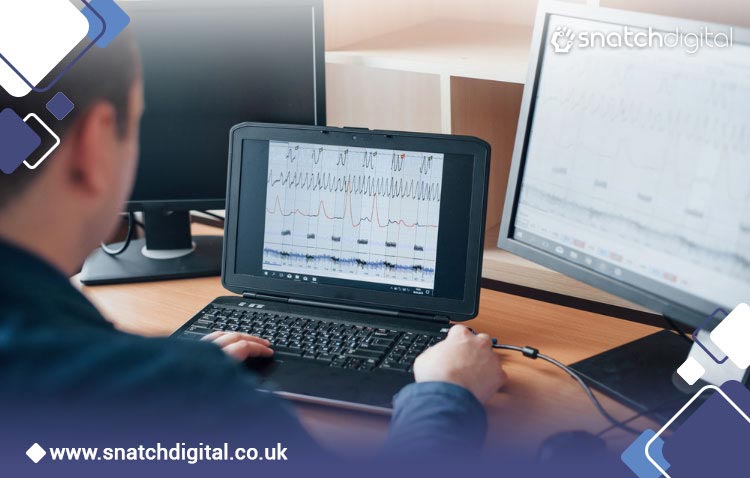Efficient management of software defects is a pivotal component of the software development cycle. Unlike the testing phase, software defect management extends beyond software delivery, involving meticulous tracking and analysis of errors. Swift identification and resolution of these issues prevent the propagation of new defects, eradicate existing bugs, and contribute valuable insights to enhance long-term software quality. In the realm of software quality assurance, defect management plays a crucial role in upholding product excellence.
Stay with us in this article to understand What is Defect Tracking and Management in Software QA.
What is Defect Tracking and Management in Software QA?
Defect Tracking and Management in Software QA involves a systematic process of identifying, documenting, and resolving issues or defects encountered during software development. This essential practice ensures that discrepancies, from minor glitches to significant flaws, are effectively addressed.
By meticulously tracking and managing defects, software teams uphold the quality and reliability of their products, creating a smoother software development journey and ultimately delivering a robust end product.
Definition and Importance of Defect Tracking and Management
Let's find the Definition and Importance of Defect Tracking and management in software QA in this section:
Defect tracking is the process of identifying and addressing flaws within the software, often stemming from design errors, misunderstandings, or assumptions about the software's environment. These defects can manifest as visual, functional, or design-related issues, becoming more challenging to address as project complexity grows.
To manage this, a specialized QA and testing team plays a crucial role in identifying, logging, and tracking defects throughout the software development lifecycle. This meticulous process ensures that issues are addressed efficiently and prevents the introduction of new defects through fixes. An effective defect tracking system is essential for managing the intricacies of large-scale projects, optimizing the defect identification process, and facilitating the resolution of client-reported issues in subsequent product releases.
The significance of defect tracking lies in its role as a comprehensive and organized approach to handling the multitude of issues that can arise in software development. It provides a structured framework to document defects, their discovery methods, and their specific details. This organized approach enhances the efficiency of the testing process by aiding in defect prioritization based on urgency and relevance.
A defect tracker not only assists in identifying the root cause of defects but also serves as a repository for tracking changes and updates related to defect resolution. By gathering metrics on defects and facilitating preventative measures, defect tracking contributes to software quality assurance. Ultimately, it streamlines the testing workflow, saving time and ensuring the robustness of the software development process.
Defect Tracking and management in software QA encompasses the process of spotting, recording, monitoring, and resolving issues encountered during software development and testing. These issues, often termed defects, bugs, or discrepancies, signify deviations between expected and actual software behavior. Effective software defect management plays a pivotal role in ensuring top-tier software quality.
It guarantees that software applications align with user expectations, function accurately, and provide an optimal user experience. This management process is a continuous effort spanning the software development lifecycle, maintaining its significance from initial development through ongoing maintenance and updates. As a cornerstone of software quality assurance, defect management underscores the delivery of reliable and user-centric software products.

Difference between Defect, bug, issue and Incident
In software development and testing, the terms "Defect," "Bug," "Issue," and "Incident" are often used to refer to various types of problems that can arise during the software lifecycle. While they might be used interchangeably in some contexts, there are subtle differences between these terms:
Defect
A defect is a general term that refers to any deviation from the expected behavior of a software application. It can encompass errors, mistakes, or flaws in the code, design, or documentation. Defects can lead to incorrect or unexpected results and might affect the functionality, performance, or security of the software.
Bug
A bug is a type of defect, but the term "bug" is often used informally to refer to coding errors or mistakes in the software that cause it to behave unexpectedly or not as intended. Bugs are usually related to implementation issues, such as syntax errors, logic errors, or incorrect calculations.
Issue
The term "issue" is a more general term that can encompass defects, bugs, and other problems encountered during software development and usage. An issue can refer to any situation that requires attention, discussion, or resolution. It's a broader term that can include defects as well as tasks, improvements, and other topics related to the software project.
Incident
An incident typically refers to an unexpected event that disrupts the normal operation of a software application once it's in production. Incidents can include errors, crashes, performance problems, security breaches, and more. Incidents are usually reported by users or detected through monitoring systems, and they require immediate attention to restore the system's functionality and stability.
How to Implement Defect Tracking and Management in Software QA?
Implementing defect tracking and defect management in software Quality Assurance (QA) involves a systematic approach to identifying, documenting, prioritizing, and resolving issues or defects within a software project.
Steps and tools for Defect Tracking and Management
For software quality assurance you must follow these processes. Attention, Here's a step-by-step guide on how to implement defect tracking and defect management in software quality assurance:
1. Defect Detection: Defect detection marks the initial stage of defect tracking, involving identification by developers, test engineers, and testers. This can occur during testing, beta testing, or even post-release. Detected defects are then logged into a defect-tracking tool, streamlining the tracking and management process.
2. Defect Categorization and Assessment: After defects are logged, a detailed report is shared with the developer, outlining each defect's specifics. The developer then assesses the defects' severity and impact. Based on this evaluation, defects are categorized as critical, high severity, medium severity, or low severity. This categorization aids developers in prioritizing and addressing defects accordingly.
3. Defect Fixing(Developers): Defect resolution, a developer-led process, involves several steps. Initially, defects are assigned to knowledgeable developers. Subsequently, a root cause analysis is performed, prioritizing the defects to understand their origins and potential fixes. The developer addresses the defect, crafting a comprehensive report detailing the solution. This report is added to the bug tracker and shared with the testing team for further validation.
4. Verification of Resolution: After the resolution report is checked, the software testing team verifies the solution through retesting to confirm defect resolution. If new defects emerge downstream or the initial issue remains unresolved, these are communicated via the defect tracker to relevant developers. Conversely, if the defect is genuinely addressed, its status is changed to "closed/resolved" within the defect tracker.
5. Defect Reports: The software testing team generates defect reports detailing issues within specific modules, including causes, fixes, trends, and tracing methods. These reports are then shared with test managers, who in turn deliver them to the management team. The management team reviews the reports, offering feedback, guidance, or additional instructions to refine the defect management process and address fault status.
6. End of Project Defect Metrics: The development team gains insights from defect tracking, utilizing metrics to assess performance. Defect discovery and resolution data are calculated for evaluation and recorded, serving as a reference for the future and a preventive measure against recurrence.
Help the process of Defect Tracking and Defect Management by using the tools below:
1. Jira: A widely used issue and project tracking tool that supports defect tracking along with various project management features.
2. Bugzilla: An open-source bug-tracking tool that helps with defect management, enhancements, and other issues.
3.GitHub Issues: If you're using GitHub for version control, you can use its built-in issue-tracking system for defect management.

Roles and Responsibility of different stakeholders Defect lifecycle and Workflow
In software development, various stakeholders collaborate to manage defects, adhering to a standard defect lifecycle and workflow. Here's a concise overview:
Roles and Responsibilities of Different Stakeholders
·Developer
Codes and implements software: They analyze, fix, and test reported defects.
·Tester/QA (Quality Assurance)
Identifies defects through testing, creates test cases, and reports issues. Collaborates with developers for verification.
· Product Manager/Owner
Defines software requirements, determines defect priorities, and ensures alignment with product goals.
·Project Manager
Oversees the project, prioritizing defects and managing resources effectively.
·Scrum Master (Agile Context)
Facilitates Agile processes, ensuring proper defect management within the framework.
·End Users/Clients
Identify defects during usage, report issues, provide feedback, and validate fixes.

Defect Lifecycle and Workflow
1. Defect Identification: Issues are identified through testing, user feedback, and monitoring.
2. Defect Reporting: Testers/users report defects, providing details and impact.
3. Defect Triage: Stakeholders review defects to prioritize based on severity and urgency.
4. Defect Assignment: Defects are assigned to developers for resolution.
5. Defect Fixing: Developers analyze, make code changes, and implement fixes.
6. Defect Verification: Testers verify the fix's effectiveness.
7. Defect Closure: Verified defects are marked as "Closed/Resolved"; unresolved issues might be reopened.
8. Defect Reporting and Metrics: Metrics on defect density, severity, and resolution time are collected to assess software quality and defect management efficiency.
The collaboration among stakeholders, adherence to the defect lifecycle, and use of metrics contribute to effective software quality assurance and management.
How to Optimize Defect Tracking and Management in Software QA?
Defect tracking is an ongoing and iterative process that plays a pivotal role in software quality assurance (QA). To enhance its effectiveness, continuous improvement is crucial. Regularly evaluate and refine your defect tracking process by incorporating feedback from team members, stakeholders, and project retrospectives.
This proactive approach allows you to identify bottlenecks, address recurring issues, and implement changes that optimize your defect-tracking workflow. In the realm of software QA management, efficient defect tracking is fundamental to delivering high-quality software products. Embracing best practices and utilizing defect-tracking tools can empower testing teams to establish a robust process.
This process ensures the timely identification, resolution, and prevention of issues. A well-defined workflow, transparent communication, and accurate reporting contribute to improved collaboration, swifter issue resolution, and elevated customer satisfaction. By embracing these practices, your software testing team can excel in defect tracking, further bolstering overall quality assurance efforts
Best practices and tips for effective Defect Tracking and Management
The following Software Defect Management tips or best practices will help you manage your Defects Tracking effectively:
1. Engage in software quality assurance by meticulously examining requirements, design documents, source code, and test cases to uncover potential defects. The thorough analysis extends to review other pertinent reports for a comprehensive evaluation.
2. Delve deep into identified issues, conducting a comprehensive assessment that culminates in the creation of a detailed defect report. This proactive step aims to prevent recurring defects through consistent documentation and periodic updates.
3. Within the domain of Software QA management, adopt a prioritization strategy for each defect, factoring in its potential impact on users. The prioritization can hinge on variables like severity, risk, occurrence probability, and user influence.
4. Elevate the defect management process by meticulously documenting all detected issues and promptly sharing them with the relevant stakeholders. Initiate status review meetings to monitor progress, discern the current status of defect resolution, and ascertain if any issues remain unresolved.
5. Prioritize the meticulous testing of all defects before the software's release, reinforcing the commitment to delivering high-quality software products within the realm of Software QA management.
How to prioritize and categorize Defects based on severe and impact
In the realm of software quality assurance and Software QA management, severity characterizes a defect's impact on functionality and end-user experience. It gauges the gravity of the issue and its criticality for resolution. This evaluation leads to categorizing the severity of defects into distinct levels, including high, medium, or low.
On the other hand, within the context of Software QA management, priority signifies the urgency of defect resolution. It assesses the speed at which an issue must be addressed, considering its potential business impact or alignment with project timelines. The priority of defects can also be classified into varying degrees, such as high, medium, or low.








